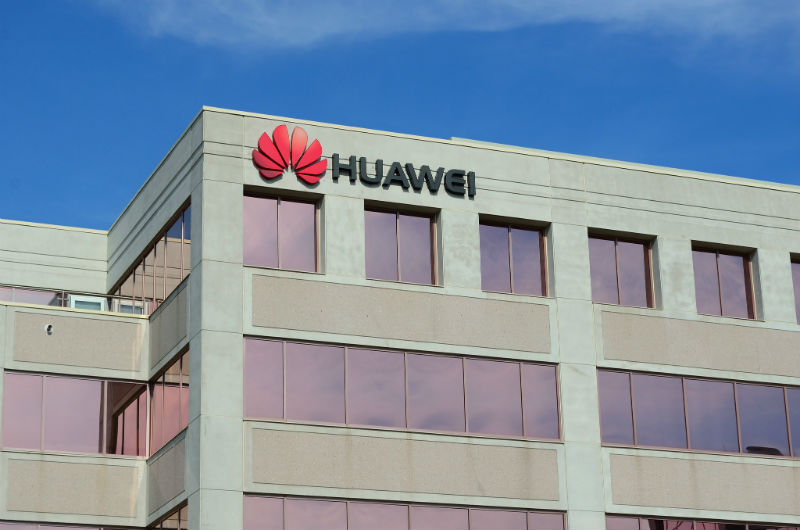Debriefing: How Problems with US Government Will Affect Huawei and IT Business

One of the main news of the technological world in May-June was the confrontation of the Chinese manufacturer Huawei and the US authorities. The administration of the American president has included the company in the black list of organizations representing a threat to the national security of the country.
As a result, Huawei was under unprecedented pressure, and the company's future, and especially the direction of production of smartphones, now raises questions. Today we will talk about current problems and possible consequences of this confrontation.
')
Huawei Problems: Losing Partnerships and Possible $ 30 Billion Losses
After the announcement of the inclusion of Huawei in the black list, serious problems began:
- Google said it would deprive the company of access to future Android updates.
- The manufacturer of ARM processors turned off all joint projects with the company.
- A large number of retailers around the world have declared that they will stop selling Huawei smartphones.
- The company's membership in the Wi-Fi Alliance and the SD Association was suspended. This means that Huawei will not be able to influence the development of Wi-Fi and SD technologies.
- The two largest UK mobile networks, EE and Vodafone, have announced that the company has been expelled from the pilot project to launch 5G networks.
All of these companies, even those that are not located in the United States, were frightened by American sanctions.
According to Huawei CEO Ren Zhenfey (Ren Zhengfei) said that between May 17 and June 16, the company's smartphone sales fell by 40% compared with the previous 30-day period. Possible losses from the ban by the US authorities Zhenfey estimated at $ 30 billion.
What will Huawei do and how it will affect the market as a whole
If the situation does not change, and Huawei will not be able to continue the partnership with Google, ARM and other companies, it will not be easy.
If the company wants to continue using Android, then it can only be done using the Android Open Source Platform (AOSP). This is a free system that any company can use, but it does not provide access to the Google Play Store. This means that the devices will not have applications like YouTube, Google Maps and Chrome - these are Google products, and the company is not obliged to provide them to everyone.
Without access to the Play Store, Huawei will have to negotiate with the developers of popular applications directly, urging them to create versions of their products for the new OS of the company. Today, this is exactly what Amazon does with its Fire OS - it is also based on AOSP, it has its own app store. Thus, Amazon controls the system on which the Fire tablets and Echo smart speakers work, but there are many times fewer applications than the Play Store.
Huawei claimed that it was developing its alternative to Android a few years ago - the project was named HongMeng OS (or, perhaps, Ark OS). According to rumors, the product may be ready by the end of 2019 or the beginning of 2020. The OS will work in mobile phones, computers, tablets, TVs, smart wearable gadgets and cars.
The company filed a patent application for a mobile operating system, so it seems that Huawei seriously gathered to find an alternative to Android.
The company works in the direction of partnership with new suppliers of electronic components. So if ARM decided to curtail any cooperation, Micron managed to find loopholes that would allow it to resume Huawei shipments.
Future standoff with the USA
Huawei is a Chinese company, and the authorities of this country can also respond harshly to sanctions against it. So in the press discusses the option in which the response restrictions will be imposed on Apple. The founder of Huawei himself said that he hoped that this would not happen.
At the same time, the size of Huawei - and in 2019, the company ranked second in the market of smartphone manufacturers, do not allow overnight to abandon any cooperation with it.
In particular, therefore, at the end of May, the US authorities issued the company a temporary license to work with US companies. It will operate until mid-August. By this time, a trade agreement between China and the United States will probably be concluded.
President Trump said that "if we make a deal, I can imagine that Huawei will be in one form or another part of it."
At the end of this week, the G20 summit will be held in the Japanese city of Osaka, and representatives of the United States declared that a trade agreement could be concluded there. So US Treasury Secretary Stephen Mnuchin said that the United States and China almost reached a trade deal, going 90% of the way. According to media reports and analysts, the United States is ready to suspend duties on Chinese goods in the amount of $ 300 billion.
findings
At the moment, the story of the confrontation between the US authorities and Huawei is not over, but some conclusions based on it can already be made:
- Global policy can influence the business of transnational companies - now corporations will have to analyze the processes occurring in the world in order to calculate possible risks.
- Nobody needs problems - in the case of Huawei, the United States’s retail networks in the UK and Japan have even preferred to abandon the sales of smartphones by the Chinese company “just in case”. IT companies in such situations should not wait for support.
- There should always be a plan B - the Amazon approach with its Fire OS in such situations turns out to be a rescue tool. Huawei realized it was too late and missed the time; other companies would analyze this fact.
Other materials on finance and stock market from ITI Capital :
Source: https://habr.com/ru/post/457852/
All Articles